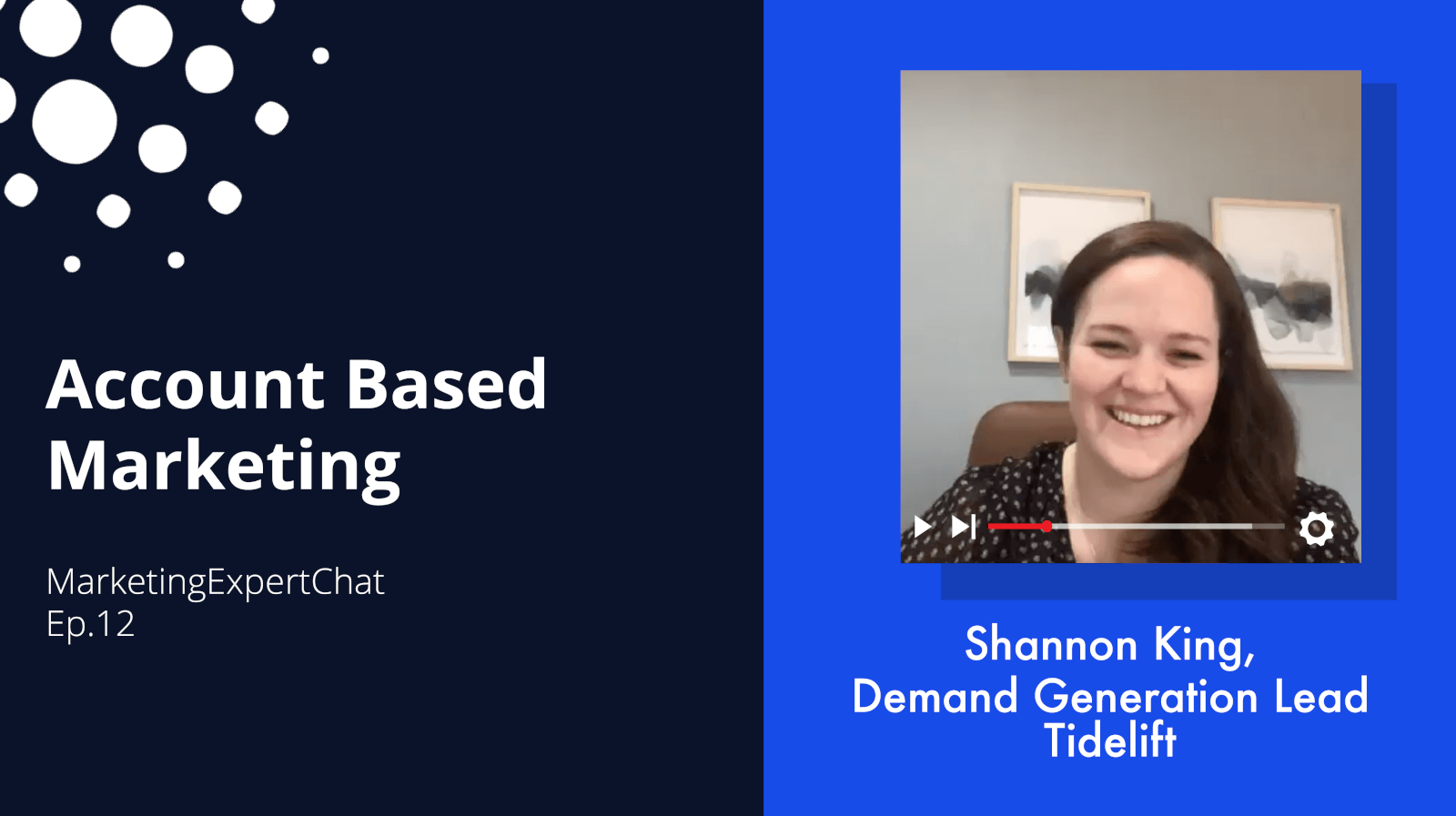Most B2B marketing campaigns could drive faster, more reliable results while spending less – all they have to do is focus exclusively on their highest-value buyers. That is what account-based marketing (ABM) promises, and with the right HubSpot tools and automations, you can achieve it with confidence.
This article draws on our experience working with 50+ B2B companies to show you exactly how to leverage HubSpot for powerful ABM strategies that drive unparalleled marketing ROI.
Expect to learn:
- Why HubSpot is the ideal platform for account-based strategies
- Which HubSpot features support account-based marketing campaigns
- How to set up and automate account based marketing with HubSpot tools
Understanding Account-Based Marketing
What is Account-Based Marketing?
Account-Based Marketing (ABM) is a strategic approach that aligns marketing and sales efforts to target high-value accounts with personalized campaigns. The net result? Deeper relationships, faster sales cycles and higher ROI. In fact, 70% of B2B marketers reported increased revenue after implementing ABM in 2023.
Why is Account-Based Marketing Important for B2B Businesses?
B2B companies often operate within a limited Total Addressable Market (TAM), with many companies competing over a handful of high-value customers. Account-based marketing solves this problem, enabling B2B marketers to:
- Precisely target ideal customers: By focusing on specific high-value accounts, you can allocate resources more effectively.
- Improve alignment between marketing and sales: Account-based marketing makes it easier for sales and marketing departments to collaborate.
- Deliver personalized customer experiences: Account-based marketing makes it far easier to tailor messaging to the unique needs of each account, allowing your messages to hit more precise pain points.
- Increase ROI: While the precise number varies, many sources suggest ABM can deliver 97% higher ROI than other B2B marketing strategies.
All of these factors make ABM a no-brainer for B2B marketers. But how can you actually realize all these benefits?
Why HubSpot is the Ideal Platform for ABM
Account-based marketing requires extensive data and the ability to understand your target accounts at a granular level. This is the most common hurdle for most B2B marketers: how would I actually go about reaching individual buyers at specific companies?

HubSpot offers a robust suite of tools specifically designed for ABM, addressing many of the challenges that B2B marketers face:
- Sales and Marketing Alignment: HubSpot’s unified CRM ensures that both teams have access to the same data. Features like the Target Accounts Dashboard help keep everyone aligned by providing a shared view of account activity and progress. They also enable quick access to key metrics like how many deals are open, the value of your deals, and when each account last engaged with your company.
- Audience Insights: HubSpot provides detailed insights into how target accounts engage with your content. The platform’s tracking and reporting tools let you see which content pieces resonate with specific stakeholders, helping you tailor future messaging.
- Scaling Personalized Campaigns: HubSpot’s automation capabilities allow you to deliver personalized experiences efficiently. From customized email templates to smart content, HubSpot makes it easy to scale personalized outreach without compromising quality.

- Campaign Analytics and Optimizations: With HubSpot’s robust reporting and analytics tools, you can track the performance of your ABM campaigns in real time. This enables ongoing optimization to ensure you are reaching the right buyers with the perfect message at the ideal moment. In fact, 89% of ABM practitioners say that reporting and analytics are crucial to their campaign success.
A Guide to Setting Up Account-Based Marketing in HubSpot
Learn the Basics to Set Up Your ABM on HubSpot
To start tunning ABM campaigns within HubSpot, you’ll need the following:
- A HubSpot Marketing Hub Professional or Sales Hub Professional account
- Customer Data: Ensure you have accurate, up-to-date information about your target accounts.
- Company Buy-In: Ensure both sales and marketing teams are committed to a shared ABM strategy.

Get Familiar with the Key ABM Tools in HubSpot
HubSpot offers a variety of tools specifically designed for ABM:
1. Target Accounts Dashboard
This feature provides an overview of your target accounts, showing engagement levels and key metrics. The dashboard serves as a centralized hub where both marketing and sales teams can monitor account activity, ensuring seamless collaboration. You can track engagement touchpoints, such as email opens, ad clicks, and website visits, to assess which accounts are ready for outreach or require further nurturing.
2. Ideal Customer Profile (ICP) Properties
Custom properties like Ideal ICP Tier and Buying Role help you categorize and prioritize accounts. These properties allow you to assign specific roles to key stakeholders within each account, ensuring that your team knows who the decision-makers and influencers are. By segmenting accounts based on tiers, you can focus more resources on high-priority accounts while still nurturing lower-tier prospects.

3. LinkedIn Ads Integration
This allows you to create highly targeted ad campaigns for decision-makers within your target accounts. The integration lets you upload your target account lists directly into LinkedIn, ensuring your ads reach the right audience. Additionally, you can track ad performance within HubSpot to measure engagement and refine your targeting strategy for better ROI.
4. Personalized Workflows and Smart Content
This allows you to automate and personalize communication based on account activity and preferences:
- Workflows help you automate repetitive tasks like follow-up emails and lead nurturing, freeing up time for more strategic activities.
- Smart Content dynamically adjusts website content and emails based on a visitor’s profile or behavior, ensuring every interaction feels personalized and relevant to their needs.

Plan an Account-Based Marketing Campaign
Planning is critical for ABM's success. Here’s how to get started:
1. Identify target accounts
Use your ICP criteria to select accounts that offer the highest value potential.
Begin by reviewing your CRM data to identify companies that closely match your Ideal Customer Profile (ICP). Leverage tools like HubSpot’s AI-powered account recommendations to discover hidden opportunities within your database.
2. Map out key stakeholders
Identify decision-makers and influencers to target within each account. Understanding the internal structure of your target accounts is crucial. Assign buying roles such as Decision Maker, Budget Holder, and Influencer to ensure your campaigns address the right people at the right time.
3. Define campaign goals
Determine what you want to achieve, such as increased engagement, meetings booked, or deals closed. Clear, measurable goals will help align your team and guide campaign execution. For instance, specific KPIs can be set, such as achieving a 30% increase in account engagement or booking ten new meetings with key stakeholders within the first quarter.
4. Develop personalized content
Tailor your messaging to address the unique challenges and goals of each account. Use insights from your ICP and stakeholder mapping to craft highly relevant content, such as case studies, personalized email sequences, or industry-specific whitepapers. Personalized content demonstrates your deep understanding of the account’s needs, increasing the likelihood of engagement.
Deploy an ABM Campaign in HubSpot
Deploying an ABM campaign in HubSpot involves several steps:
1. Set up your Target Accounts Dashboard:
The Target Accounts Dashboard provides a real-time view of each account’s engagement and activity, helping you prioritize follow-ups. Populate it with your selected accounts and use it to track key metrics, such as:
- Deal stage progression
- Content engagement
- Account health score
These will help your team stay on top of the most promising opportunities.
2. Create personalized workflows
Automate outreach based on specific triggers, such as website visits or email interactions.
HubSpot’s workflow automation allows you to tailor your messaging based on a lead’s behavior, ensuring timely and relevant follow-ups. For instance, if a contact downloads a whitepaper, the workflow can automatically send a follow-up email offering a related case study or webinar invite.
3. Launch targeted LinkedIn ads
Use LinkedIn Ads integration to reach decision-makers in your target accounts. This feature enables precise targeting by syncing your target account list with LinkedIn’s audience data. You can create ad campaigns that highlight your value propositions and directly address the pain points of decision-makers, driving them to engage with your brand.
4. Send personalized email sequences
Leverage HubSpot’s email tools to nurture your accounts with relevant content and offers. Craft email sequences that are tailored to the recipient’s role and stage in the buying journey. HubSpot’s sequencing tools also provide performance insights, helping you refine your messaging and improve open and click-through rates over time.
Optimize Your Account-Based Marketing Using HubSpot
Companies that regularly optimize their ABM campaigns report 208% more revenue contribution compared to those that don’t. HubSpot provides the tools you need to continuously improve:
1. Monitor engagement metrics
Use HubSpot’s reporting features to track email opens, ad clicks, and website visits.
Tracking these metrics helps you identify which accounts are engaging most actively with your content. HubSpot’s detailed reports allow you to see engagement at both the account and individual contact levels, giving you a clearer picture of which strategies are working and where improvements are needed.
2. Analyze account progress
Use the Target Accounts Dashboard to gain a real-time view of where each account stands in the buyer’s journey. Track key milestones, such as lead conversions, meeting bookings, and deal advancements. By regularly reviewing account progress, you can prioritize high-value accounts that are close to making a purchasing decision and allocate resources accordingly.
3. A/B test your content
Experiment with different messages, subject lines, and content formats to see what resonates best. HubSpot’s A/B testing tools allow you to compare performance across multiple versions of your content. For example, test two different subject lines to determine which drives higher open rates or compare call-to-action designs to see which yields more conversions.
4. Adjust your strategy based on insights
Use data-driven insights to refine your approach and improve campaign outcomes. HubSpot’s analytics provide actionable recommendations based on campaign performance. Whether it’s shifting focus to higher-performing channels or revising underperforming messaging, leveraging these insights ensures your ABM efforts remain agile and effective.
Find and Convert Your Ideal Buyers with ProperExpression
ProperExpression is a full-stack B2B marketing agency that helps companies of all sizes deliver winning ABM strategies. As a HubSpot Platinum Partner, we use our platform expertise to increase the efficiency, precision, and ROI of your campaigns – ensuring you can start, scale, and optimize an account-based marketing program with confidence.
Want to learn how we could help you find, nurture and convert your ideal buyers?








